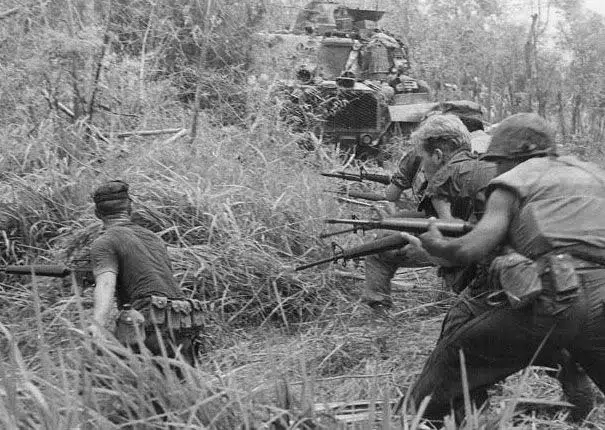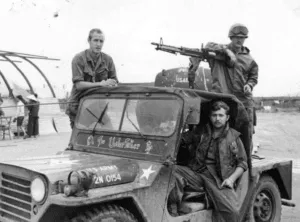The Vietnam War
The Vietnam War was a protracted conflict that pitted the communist government of North Vietnam and their allies in the south, known as the Viet Cong, against the government of South Vietnam and its main ally the United States. At the heart of the conflict was North Vietnam’s desire, after its defeat of the French colonial administration of Vietnam in 1954, to unify the entire country under a single communist regime modeled after those of China and the Soviet Union. On the other hand, the South Vietnam government fought to preserve a Vietnam more closely aligned with the west.
U.S. military advisers, which were present in small numbers throughout the 1950s, were introduced on a large scale beginning in 1961 and active combat units were introduced in 1965. More than 50,000 U.S. military personnel were stationed in Vietnam by 1969. At the same time, China and the Soviet Union poured supplies, weapons, and advisers into the North, providing political direction, support, and combat troops for the campaign in the South. The casualties and costs of the growing war proved too much for the United States so combat units were withdrawn by 1973. In 1975, the South fell to a full-scale invasion by North Vietnam.
The human costs of this long conflict were harsh for everyone involved. Vietnam did not release its official estimate of war dead until 1995: as many as 2 million civilians on both sides and roughly 1.1 million North Vietnamese and Viet Cong fighters. The United States military estimated between 200,000 and 250,000 South Vietnamese soldiers were killed in the war. In 1982 the Vietnam Veterans Memorial was dedicated in Washington, D.C., inscribed with the names of the 57,939 members of the United States armed forces who were killed or missing as a result of the war. Over the years, additions to the list have brought the total past 58,200. Among other countries that fought for South Vietnam on a smaller scale, South Korea suffered more than 4,000 dead, Australia more than 500, Thailand roughly 350, and New Zealand about three dozen.
As a result of the war, Vietnam emerged as a potent military power within Southeast Asia. However, its business, agriculture, and industry were disrupted, its cities and towns were badly damaged, and large parts of its countryside were scarred from defoliation and bombs and remained laced with land mines. A mass exodus of people loyal to the South Vietnamese cause in 1975 was followed by another wave of “boat people,” refugees fleeing the economic restructuring imposed by the communist regime, in 1978.
Meanwhile, the United States, with its civilian electorate deeply divided and its military demoralized, began to come to terms with the defeat in what had been its longest and most controversial war thus far. The two countries had no diplomatic relations again until 1995.



